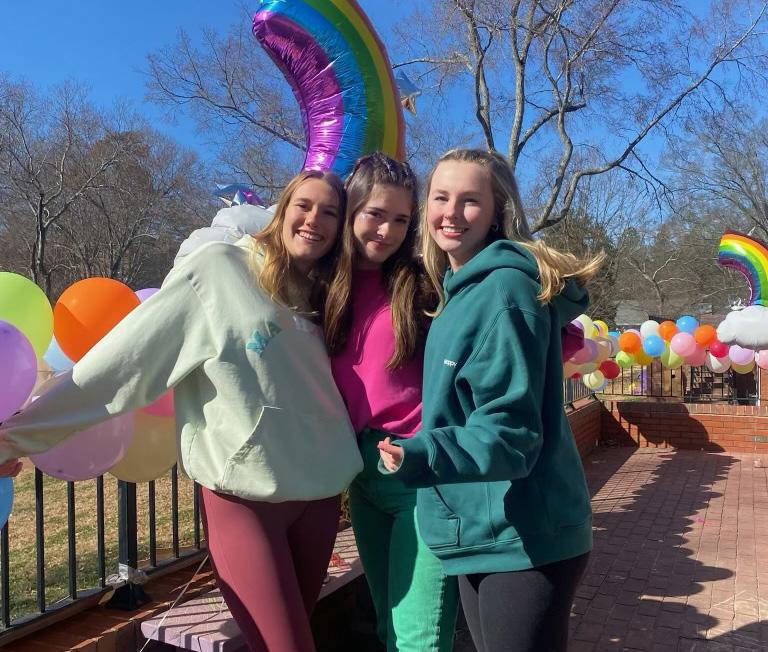
3 minute read
Welcoming the Year of the Rabbit: Chinese New Year Celebrations at Davidson
Last week was the start of the Year of the Rabbit, which was an expected moment for mirth, reunion, comfort, family, and companionship. Originating in China thousands of years ago, Chinese New Year, or the Spring Festival is notable for its traditions and increasing popularity over time. Chinese people take seven days to spend time with their families and loved ones. They usually eat dumplings and watch the CCTV New Year’s Gala. The convention differs by region. Where the climate is colder and drier, in Liaoning, Jilin, and Heilongjiang provinces, people stay inside for warmth and play board games, chat, and watch festive TV programs. In southern regions such as Guangdong and Jiangsu provinces, people go outside to view lanterns and parterre designed for the celebration. Another favorite tradition is setting off firecrackers, which were forbidden by governmental regulations for improving the air quality and avoiding damages brought by the fire. This year the policies have largely changed to allow the colorful and loud firecrackers thanks to effective air quality progress, safety prevention, and people’s growing wishes to create festivity. What children and teenagers love most is the red pocket with money they could receive from seniors in the family. They develop tactics to hide the money in case their parents take it, such as keeping it in a secret box with a lock and putting it under the bed.
The Chinese New Year also attracted worldwide attention and celebration. There were performances such as Ribbon
Advertisement
Twirling and Lion Dance held in NYC. The Tokyo Tower in Japan was put on red lights. People performed Dragon Dance in South Africa. Chinese communities in the Philippines also gathered together to perform similarly with fireworks and red lanterns.
Let’s take a look at what celebration took place at Davidson. On January 21, which was Chinese New Year’s Eve, the Chinese Culture Club (CCC) prepared a successful dinner event for the college community with delicious Chinese cuisine, traditional calligraphy activities, and playback of this year’s CCTV Gala. We then introduced the main dish made by CCC personally, Mala Fry Hot Pot. This dish is from Sichuan, China, which is renowned for its spicy taste, attractive look, and a variety of ingredients such as fish tofu, beef meatballs, cilantro, and soybean sprouts. Another important part of the to-do list of the New Year is that people put on the character Fu and antithetical couplets on the door as a charm of good luck. The character and couplets are usually hand-written or printed with written calligraphy. This celebration was also welcomed by the activity of writing this character on red paper with brushes and ink. It was evident that students were particularly interested in experiencing this type of writing and by the end of the event, many of them left with a piece of satisfactory calligraphy work.
This is the second Chinese New Year I spent at Davidson with friends, and we endeavor to preserve as many activities as possible in order to create a safe and pleasant space for
BY LISA MENG ‘24
everyone to gather together and share our felicity. Numerous Chinese students all over the world had their own ways of spending this holiday and remembering traditions. This allows the essence of the New Year to be brought out, which is the conduction of conventional habits at special moments, and the spread of cultural heritage from the global perspective. Chinese New Year is increasing its influence through displays of a variety of rituals and wishful thinking. In recent Covid years of turbulence and depression, the spirit of this festival is exactly what people need to feel relaxed and encouraged.
This year, a shooting took place in California during the holiday. This New Year is not only about the formal reunion, but also care and emotional support. What makes this Chinese New Year different is that people are reaching out to others and healing from the trauma of the shooting together. This unity is a central quality of the festival. For those particularly interested in the formation of traditions during the Chinese New Year, they may realize that behind almost each one of them, there is a story of how ancestors overcame challenges by turning forceful events into opportunities for unity. They grant each other and themselves the sincerest blessings about life. After thousands of years these stories tend to be forgotten, but the purpose behind them lives on. In this sense, when there are hard times, characteristics emerge from their cultural legacy to guide them toward resolutions.







